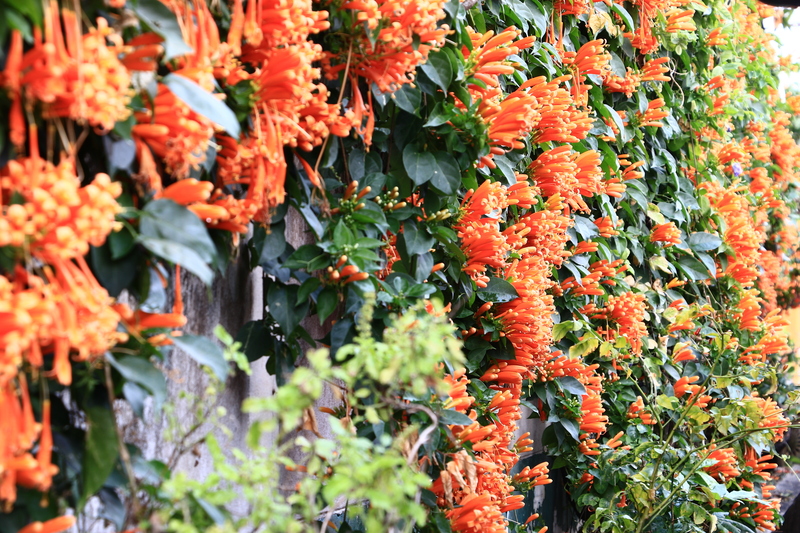The Ultimate Guide to Designing a Safe Garden for Kids
Posted on 22/09/2025
The Ultimate Guide to Designing a Safe Garden for Kids
Creating a safe garden for kids where your children can play, learn, and engage with nature is a rewarding experience. However, ensuring safety requires careful planning and informed decisions. If you're looking to transform your backyard into a child-friendly paradise, follow this comprehensive guide on how to design a garden that's as secure as it is fun.
Why Child-Safe Garden Design Matters
The garden often serves as the first exposure children have to the outdoors and to nature's wonders. A safe garden environment nurtures curiosity and creativity, but more importantly, it minimizes risks. Every year, countless injuries occur in home gardens due to improper planning or overlooked hazards. Thus, designing a safe garden for kids is not just a thoughtful gesture--it's an essential step for parental peace of mind.

Planning Your Child-Friendly Garden: Key Considerations
Planning is vital in any garden project, especially when children's safety is at stake. Here are some essential aspects to prioritize:
- Visibility: Ensure you can see your children at all times when they're outdoors.
- Accessibility: Pathways, play areas, and plants should be easily accessible to children of all ages.
- Secure Boundaries: A safe garden for your kids starts with strong, secure fences or barriers that prevent unsupervised access to roads or water features.
- Materials: Choose non-toxic, child-friendly, and durable materials for all garden features.
- Plant Selection: Avoid poisonous or allergy-causing plants, and opt for sturdy, non-thorny varieties.
- Play Spaces: Dedicate specific zones for different activities but keep them close enough for easy supervision.
Creating Safe Boundaries and Garden Layout
Safe boundaries are the cornerstone of any child-friendly outdoor space. Here's how to get it right:
1. Fencing and Gates
- Height: Use fences that are at least 1.2 meters (4 feet) high to prevent climbing.
- Materials: Go for smooth, splinter-free woods or coated metals. Avoid sharp edges and protruding nails or screws.
- Secure Gates: All gates should have child-proof latches and locks, especially if your garden borders streets or public spaces.
2. Zoning Your Safe Kids' Garden
Divide your garden for children into dedicated areas:
- Active Play: For trampolines, swings, and climbing frames, keeping softer surfaces underfoot, like grass or rubber mulch.
- Creative Play: Includes sandpits, mud kitchens, and water tables--always away from sharp or hard objects.
- Quiet Corners: Reading nooks, bug hotels, and bird-watching spots encourage calm engagement with nature.
Choosing Safe Plants for a Kids' Garden
Plant selection is fundamental when planning a risk-free garden for children. Many common plants can be toxic or cause allergic reactions, so choose wisely:
Toxic Plants to Avoid
- Foxglove
- Nerium oleander
- Daffodil bulbs
- Lily of the Valley
- Yew
- Hydrangea
Child-Safe Plant Varieties
- Sunflowers
- Lavender (*also great for pollinators*)
- Marigolds
- Snapdragons
- Herbs like mint, basil, and thyme
- Fruit bushes (raspberries or strawberries)
Tip: Always teach children not to eat any plants or berries unless you confirm they're safe.
Pathways and Surfaces: Preventing Slips and Trips
Another critical aspect of child-proof garden design is the choice of surfacing. Uneven ground, loose gravel, or hard paving can lead to accidents. Here's how to make play surfaces secure:
- Non-slip Paving: Choose textured, non-slip slabs for main paths.
- Soft Materials: Use bark or wood mulch, grass, or rubber surfacing around play equipment to cushion falls.
- Level Ground: Keep key play spaces as flat and even as possible.
Safe Water Features for Kids' Gardens
Water brings fun and biodiversity, but it's one of the greatest risks in a family garden. Follow these guidelines:
- Ponds: Fencing or strong covers are essential. For very young children, consider postponing the addition of a pond until they're older.
- Containers: Avoid open buckets or barrels that can fill with rainwater.
- Water Play: Use shallow water tables or splash mats that can be drained after each use.
- Supervision: Never leave children unattended around water, regardless of depth.
Garden Tools and Storage Safety
Gardening is a fantastic learning experience, but tools and chemicals must be managed carefully in a safe garden for kids. Here's what to do:
- Lock Away Chemicals: Store all fertilizers, pesticides, and other chemicals in a locked shed or box, well out of children's reach.
- Child-Safe Tools: Use only age-appropriate, lightweight tools with rounded edges for supervised tasks.
- Safe Storage: Keep tools locked up or hung high when not in use.
Safe Garden Furniture and Structures
Outdoor furniture and built structures should withstand little hands, climbing feet, and sudden weather changes:
- Sturdy Materials: Opt for heavy-duty plastic, wood, or powder-coated metal with rounded corners.
- Anchoring: Securely anchor play equipment, sheds, and greenhouses to prevent tipping over.
- Shade: Consider pergolas, sails, or child-sized umbrellas to provide safe shade during hot weather.
- Age-Appropriate Installations: From climbing frames to sand pits, ensure features match your children's ages and abilities.
Check all installations regularly for wear and tear or loose fittings.
The Importance of Supervision and Education
No safety measure replaces the protection that comes from active, attentive supervision. However, equally important is educating your children about outdoor safety:
- Teach them how to identify dangerous areas (e.g., toolshed, pond)
- Discuss why certain plants and berries shouldn't be picked or eaten
- Establish clear boundaries where they can and cannot play
- Instruct on the safe use of play equipment and toys
Engaging Kids in the Safe Garden Design Process
One of the best ways to design a garden for kids is to include them in the process. Letting children help with decisions empowers them--and can make them more respectful of garden boundaries and safe-play rules. Consider:
- Letting them choose seeds, flowers, or ornaments for their own patch
- Planning a DIY scarecrow or bug hotel together
- Designating a "secret" reading or quiet corner with their input
Engagement fosters a sense of responsibility and gets kids invested in maintaining the safe space you're creating.
Low-Maintenance Tips for a Safe Family Garden
A family garden should benefit everyone--not become a chore. Keep these low-maintenance garden tips in mind:
- Mulching: Reduces weeds and need for chemical herbicides.
- Automatic Watering: Timed drip systems or soaker hoses save time and avoid puddles.
- Robust Plants: Use hardy shrubs and perennials that don't require much care or present hazards.
- Simple Layout: Minimize hard-to-reach spaces to make supervision and maintenance easier.
Essential Safety Checks and Routine Maintenance
An essential aspect for any safe kids' garden is regular inspection and maintenance:
- Check fences, gates, and locks monthly
- Inspect play equipment for damage or loose fixtures
- Regularly weed out any dangerous plants that might appear
- Remove debris, broken glass, or sharp objects promptly
- Refill soft surfacing (e.g., bark, sand) as needed

Must-Have Features for a Fun and Safe Kids' Garden
The best child-friendly gardens are both safe and exciting. Consider these must-have features:
- Edible Gardens: Kids love growing and picking their own vegetables or berries--great life skills, with the bonus of safety if choices are pre-approved.
- Mini Wildlife Habitats: Butterfly houses, bee hotels, and bird feeders are safe ways to teach biodiversity and responsibility.
- Secure Storage: Keep garden toys and tools neatly stored to avoid tripping or clutter-related injuries.
- Shaded Sitting Spots: For all-day fun, make sure there's somewhere comfortable and shaded to take a break.
Bringing It All Together: Your Child's Safe Garden Adventure
Designing a safe garden for kids blends thoughtful planning, regular inspections, and child engagement. By following these comprehensive guidelines, you'll create an outdoor space where children can experience the magic of nature with minimum risk and maximum joy.
Remember that the perfect child-safe garden grows with your family. As your children get older, their needs and skills will evolve, and so should your garden's safety features. By staying attentive and adaptive, you'll ensure a lifetime of safe, memorable outdoor adventures for your kids.
Key Takeaways for Designing a Secure Kids' Garden
- Choose safe, child-appropriate plants and garden materials
- Maintain strong boundaries and safe storage for tools and chemicals
- Use non-slip, shock-absorbent surfaces in play areas
- Supervise water features closely and cover or fence as needed
- Regularly check and maintain play equipment and structures
- Educate kids about garden safety and boundaries
- Engage children in the design and upkeep for better awareness
With the right strategies in place, your garden will become a secure, nurturing environment--fostering kids' growth, confidence, and enthusiasm for the great outdoors. Start planning today and watch your safe family garden flourish!

